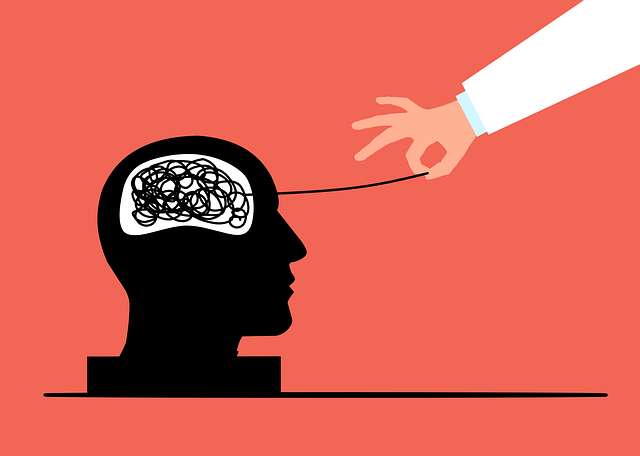Cognitive Behavioral Therapy (CBT) is a powerful talk therapy addressing negative thought patterns and behaviors, leading to improved emotional health and behavioral change. Through identifying Automatic Negative Thoughts (ANTs), challenging cognitive distortions, and adopting positive alternatives, individuals gain control over their thoughts and actions. CBT techniques, including mindfulness and thought recording, empower people to manage stress, anxiety, and other mental health challenges, fostering long-term well-being and resilience. Despite initial hurdles, dedicated practice with a therapist results in lasting behavioral modifications and enhanced overall mood.
“Unleash your potential and transform your life with Cognitive Behavioral Therapy (CBT), a powerful tool for behavioral modification. This article guides you through the intricacies of CBT, offering a comprehensive overview of its effectiveness in changing harmful behaviors.
From understanding the core principles to identifying and challenging negative thought patterns, we’ll explore each step of the process. Discover how CBT equips individuals with healthy coping mechanisms, making it a game-changer for those seeking lasting personal growth and improved mental well-being.”
Understanding CBT Therapy: An Overview

CBT, or Cognitive Behavioral Therapy, is a therapeutic approach that focuses on modifying negative thought patterns and behaviors. It’s a structured form of talk therapy that helps individuals understand the connection between their thoughts, feelings, and actions. By identifying distorted thinking and replacing it with more realistic and positive thoughts, CBT enables people to change their emotional responses and behave in ways that align with their goals.
This type of therapy is effective for treating various mental health conditions such as depression, anxiety disorders, post-traumatic stress disorder (PTSD), and eating disorders. During CBT sessions, therapists help clients recognize unhelpful cognitive distortions and provide tools to challenge and replace them. Through exercises and homework assignments, individuals learn to apply these techniques in their daily lives, fostering healthier thinking habits and lasting behavioral modification.
How CBT Works for Behavioral Modification

Cognitive Behavioral Therapy (CBT) is a highly effective approach for behavioral modification, focusing on identifying and changing negative thought patterns and behaviors. It works by helping individuals understand that their thoughts, feelings, and actions are interconnected, and by modifying these thought processes, one can influence their emotional responses and subsequent behaviors.
Through CBT, individuals learn to challenge and replace irrational or unhelpful beliefs with more realistic and positive ones. This process involves becoming aware of automatic negative thoughts (ANTs) and analyzing their validity. By questioning these thoughts and replacing them with balanced alternatives, CBT empowers people to adopt healthier behaviors, leading to improved emotional well-being and enhanced coping strategies in various areas of life.
Identifying Unhelpful Thoughts and Beliefs

Unhelpful thoughts and beliefs are often at the root of many behavioral issues, making them a crucial target for Cognitive Behavioral Therapy (CBT) therapy. CBT aims to help individuals identify and challenge these negative thought patterns and replace them with more realistic and adaptive ones. The first step is becoming aware of one’s automatic thoughts—the instant, often unconscious reactions to situations that can be unreasonably negative or distorted. These thoughts are quickly evaluated in light of evidence for and against their validity.
By examining the evidence, individuals learn to question the accuracy and helpfulness of these thoughts. This process involves recognizing cognitive distortions like all-or-nothing thinking, catastrophizing, and overgeneralization. Once identified, unhelpful beliefs can be confronted and replaced with more balanced alternatives, leading to positive behavioral changes.
Challenging Negative Thought Patterns

Cognitive Behavioral Therapy (CBT) is a powerful tool for challenging and modifying negative thought patterns that can often lead to unhealthy behaviors. This process involves identifying distorted or irrational thoughts and replacing them with more balanced and realistic ones. By doing so, CBT helps individuals gain a new perspective on their emotions and behaviors, enabling them to make positive changes in their lives.
In CBT therapy, individuals learn to recognize unhelpful thought patterns and question their validity. For example, if someone consistently thinks, “I always fail at everything,” they might challenge this thought by examining the evidence for and against it. This encourages a more cognitive approach, where thoughts are evaluated rather than accepted blindly. As these negative patterns are challenged, individuals can start to replace them with more adaptive beliefs, fostering a healthier mental landscape that supports positive behavioral modification.
Developing Healthy Coping Mechanisms

Developing healthy coping mechanisms is a cornerstone of Cognitive Behavioral Therapy (CBT) for behavioral modification. CBT encourages individuals to identify and challenge unhelpful thought patterns, which in turn can lead to improved emotional regulation. By learning effective coping strategies, individuals can better manage stress, anxiety, and difficult emotions without resorting to unhealthy behaviors or negative thought loops.
This process involves replacing maladaptive coping mechanisms with more constructive alternatives. For instance, instead of turning to food for comfort, CBT might suggest practicing mindfulness, engaging in physical activity, or connecting with supportive social networks. These healthy coping mechanisms not only provide short-term relief but also foster long-term resilience and well-being.
Applying CBT Techniques in Daily Life

CBT techniques, when integrated into daily routines, offer powerful tools for behavioral modification. This involves identifying and challenging negative thought patterns, a core aspect of CBT therapy, which can significantly impact one’s emotional well-being. By questioning these thoughts and replacing them with more realistic, positive alternatives, individuals gain a sense of control over their emotions and behaviors. For instance, someone struggling with anxiety might learn to replace “I always mess up” with “I made a mistake, but I can learn from it.”
Practicing mindfulness, another CBT technique, encourages living in the present moment, reducing rumination on past events or worry about the future. This cognitive shift enables individuals to engage more fully in their daily lives, enhancing overall well-being. Techniques like thought recording, rational reflection, and behavioral activation can be easily incorporated into everyday activities, providing practical strategies for managing stress, anxiety, and other mental health challenges.
Common Challenges and Success Stories

Many individuals embarking on CBT therapy for behavioral modification face common challenges. One of the primary obstacles is changing deeply ingrained habits and thought patterns, which can be a gradual process. Resistance to change, fear of the unknown, and past experiences that shape one’s perspective can make it difficult to embrace new strategies. Additionally, maintaining motivation throughout the therapeutic journey is essential, as setbacks are normal and part of growth.
Despite these challenges, countless success stories exist. CBT has proven effective in helping people overcome a range of issues, from anxiety and depression to specific phobias and substance abuse disorders. Through dedicated practice and collaboration with therapists, individuals have achieved lasting behavioral modifications, improved mood, and enhanced overall well-being. These successes underscore the power of CBT as a transformative tool when combined with commitment and perseverance.
Starting Your Journey with CBT Therapy

Embarking on your journey with Cognitive Behavioural Therapy (CBT) is a proactive step towards transforming your life. It’s like unlocking a map that guides you through the intricate pathways of your mind, helping you identify and challenge negative thought patterns and behaviours. CBT therapy empowers individuals to take control of their emotions and actions by understanding the connection between thoughts, feelings, and behaviours.
The initial steps involve establishing open communication with a qualified therapist who will tailor the treatment plan to your specific needs. Through this collaborative process, you’ll learn to recognise unhelpful cognitive distortions and replace them with more realistic and positive thought patterns. With regular practice, CBT enables you to develop healthier habits, fostering resilience and enhancing overall well-being.
